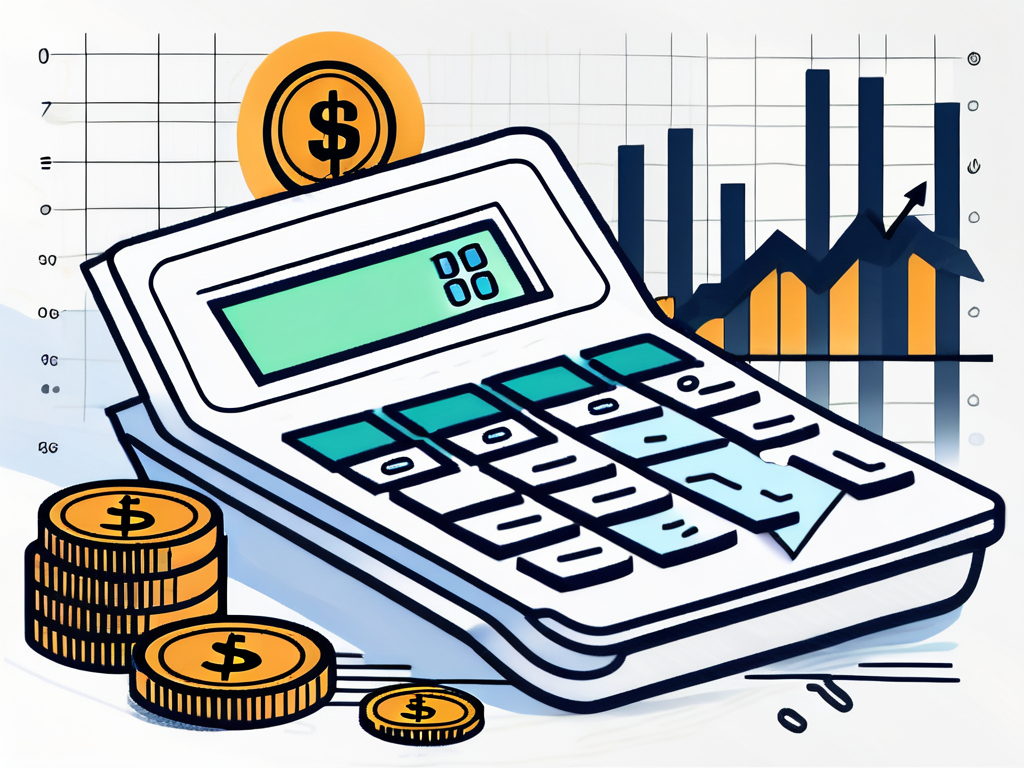
Unlock the secrets to financial success with our comprehensive guide on calculating profit margin percentage.

Profit margin percentage is a crucial financial metric that indicates how much profit a company makes for every dollar of revenue. For business owners and stakeholders, understanding this percentage is vital for assessing financial health and making informed decisions. In this guide, we will explore the concept of profit margin percentage, how to calculate it, and tips for improving it.
The profit margin percentage serves as a lens through which business performance can be evaluated. It measures the profitability of a company by comparing net income to total revenue. A higher profit margin percentage indicates a more financially sound business, capable of generating more profit from its sales.
Essentially, profit margin percentage is defined as the net profit divided by total revenue, multiplied by 100 to convert it into a percentage. The formula looks like this:
Profit Margin Percentage = (Net Profit / Total Revenue) * 100
This percentage provides a straightforward way to understand how much of each dollar earned is retained as profit after all expenses have been accounted for. It is important to note that profit margins can vary significantly across different industries; for instance, technology companies often enjoy higher profit margins compared to retail businesses, which typically operate on thinner margins due to higher competition and lower pricing power.
Profit margin percentage is an indispensable tool for evaluating the financial viability of a business. It allows entrepreneurs to track profitability trends over time and to benchmark against industry standards. For investors and stakeholders, a solid profit margin can indicate that a company is well-managed and capable of sustaining growth.
Moreover, knowing the profit margin percentage helps in making critical business decisions. Whether contemplating price changes, cost cutting, or investment in expansion, profit margins provide the quantitative foundation for these choices. Additionally, a consistent profit margin can enhance a company's reputation in the market, attracting potential investors who are looking for stable and reliable returns. This can lead to increased investment opportunities and partnerships, further bolstering the business's growth potential.
Furthermore, understanding the nuances of profit margin percentage can also empower businesses to identify areas for improvement. By analyzing the components that contribute to profit margins—such as cost of goods sold, operating expenses, and pricing strategies—companies can implement targeted strategies to enhance their profitability. For example, a business might discover that streamlining its supply chain or renegotiating supplier contracts could significantly improve its profit margins, leading to a healthier bottom line and more resources for innovation and development.
To accurately calculate profit margin percentage, it’s essential to understand its basic components: revenue and cost of goods sold (COGS). These elements provide the necessary information to derive meaningful financial insights.

Revenue is the total amount of money generated from sales of goods or services before any costs or expenses are deducted. It forms the basis on which profit margin calculations are made. Higher revenue figures can create the illusion of profitability without considering costs, making revenue an essential factor in this equation. Understanding the sources of revenue is equally important; for instance, recurring revenue from subscriptions can provide a more stable financial outlook compared to one-time sales. This stability can influence investment decisions and strategic planning, as businesses with predictable revenue streams may be better positioned to weather economic fluctuations.
Cost of Goods Sold (COGS) represents all the costs directly associated with the production of goods or services sold by a company. This includes material costs, labor, and any overhead linked directly to the production process. Properly calculating COGS is crucial, as it directly impacts the gross profit, and therefore, the profit margin percentage. Misestimating these costs can lead to inflated profit margins and poor decision making. Furthermore, businesses must consider variable costs, which fluctuate with production levels, and fixed costs, which remain constant regardless of output. Analyzing these components can provide deeper insights into operational efficiency and help identify areas for cost reduction, ultimately enhancing profitability and competitiveness in the market.
Now that we have a foundational understanding of profit margin percentage and its components, let’s dive into a step-by-step guide to calculating it. Each step is crucial for achieving accurate results.

To begin, calculate the gross profit. This is the difference between total revenue and COGS. Knowing how much you make after direct costs is the first step toward understanding your overall profit position:
Gross Profit = Total Revenue - COGS
Accurate calculation of gross profit is vital, as it serves as the starting point for further profitability assessment. It's important to ensure that all costs associated with the production of goods are accounted for in the COGS, including materials, labor, and any overhead that can be directly attributed to the manufacturing process. This clarity not only aids in financial reporting but also helps in identifying areas where cost reductions can be made, ultimately improving your gross profit margin.
Next, calculate your net profit by subtracting all operating expenses, interest, and taxes from your gross profit. This gives you a clearer insight into how much profit is truly available for stakeholders:
Net Profit = Gross Profit - (Operating Expenses + Interest + Taxes)
Net profit is a more comprehensive measure of profitability, as it accounts for all costs associated with running the business, not just those directly tied to production. It's essential to categorize your operating expenses accurately, as they can include everything from salaries and rent to marketing and utilities. By analyzing these expenses, businesses can identify non-essential costs that can be trimmed, thus enhancing net profit and providing a more robust financial picture.
Finally, you can now calculate the profit margin percentage using the formula provided earlier. Divide the net profit by total revenue and multiply by 100:
Profit Margin Percentage = (Net Profit / Total Revenue) * 100
This gives you the key metric that allows you to make informed strategic decisions regarding pricing, costs, and overall business performance. Understanding your profit margin percentage is not just about knowing your current financial health; it also serves as a benchmark for future performance. By comparing your profit margins against industry standards or historical data, you can gauge your competitiveness and make necessary adjustments to your business strategy. Furthermore, a healthy profit margin can attract potential investors, as it indicates efficient management and a sustainable business model.
As straightforward as it may seem, calculating profit margin percentage can lead to common mistakes that may skew your understanding of financial health.
One common pitfall is neglecting to factor in indirect costs such as administrative salaries, rent, and marketing expenses. These contribute significantly to the overall financial picture and should not be ignored. Overlooking these costs may lead to an inflated perception of profitability. For instance, a business may report a healthy profit margin without accounting for the substantial costs of maintaining a physical storefront or the expenses associated with digital marketing campaigns. By including these indirect costs in the calculation, businesses can gain a more accurate view of their financial standing and make informed decisions about pricing strategies and cost management.
Another mistake occurs when businesses misinterpret their profit margins. Context matters; a lower profit margin in a high-volume business may be more sustainable than a high profit margin in a low-volume one. Always analyze profit margins as part of a broader set of financial metrics to avoid misleading conclusions. Additionally, it's crucial to compare profit margins with industry benchmarks, as different sectors have varying standards. For example, retail businesses typically operate on thinner margins compared to technology firms. Understanding these nuances can help business owners set realistic expectations and identify areas for improvement, ensuring that they are not only focused on the numbers but also on their strategic positioning within the market.
Improving profit margin percentage is a goal for many businesses, and several strategies can be employed to achieve this. Here are some effective tips:

Focus on marketing strategies and customer engagement to boost sales revenue. This could involve launching targeted marketing campaigns, enhancing customer service, or optimizing your product offerings to appeal to your market more effectively. Additionally, consider leveraging digital platforms and social media to reach a broader audience. Engaging with customers through interactive content, such as polls or live Q&A sessions, can also foster a sense of community and loyalty, encouraging repeat purchases. Furthermore, analyzing customer feedback can provide insights into their preferences, enabling you to tailor your offerings and promotions accordingly.
Analyze your production processes and supplier agreements to identify opportunities for reducing COGS. Negotiating better supplier deals or improving manufacturing efficiency can boost your profit margins. It's also beneficial to conduct a thorough review of your inventory management practices; implementing just-in-time inventory systems can reduce holding costs and minimize waste. Additionally, exploring alternative materials or production methods may lead to significant cost savings. Collaborating with suppliers to streamline logistics and reduce shipping costs can further enhance your bottom line, creating a more sustainable and profitable operation.
Review your pricing strategy regularly. Consider implementing dynamic pricing based on demand, setting minimum price thresholds, and adjusting prices based on market conditions. Effective pricing strategies can significantly impact overall revenue and, by extension, profit margin percentage. Moreover, conducting competitor analysis can provide valuable insights into pricing trends within your industry. Offering tiered pricing or bundling products can also encourage larger purchases, increasing the average transaction value. Additionally, consider utilizing psychological pricing techniques, such as charm pricing (e.g., pricing an item at $9.99 instead of $10), which can influence consumer perception and drive sales.
Understanding and applying profit margin percentage is a powerful aspect of financial decision-making. It provides insight into the profitability of your business and informs strategic decisions ranging from pricing to resource allocation. By following the steps outlined in this guide, avoiding common errors, and implementing strategies to improve your margins, you can achieve greater financial health and sustainability for your enterprise.
Utilize profit margin percentage not just as a static metric, but as a dynamic tool to steer your business toward success in an ever-competitive marketplace.
Being audited is comparable to being struck by lightning. You don't want to practice pole vaulting in a thunderstorm just because it's unlikely. Making sure your books are accurate and your taxes are filed on time is one of the best ways to keep your head down during tax season. Check out Vincere's take on tax season!

This post is just for informational purposes and is not meant to be legal, business, or tax advice. Regarding the matters discussed in this post, each individual should consult his or her own attorney, business advisor, or tax advisor. Vincere accepts no responsibility for actions taken in reliance on the information contained in this document.
Copyright © 2025 Vincere Tax| All Rights Reserved
Privacy Policy